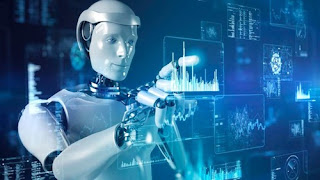Learn OCR in Python using OpenCV, Pytesseract, Pillow and Machine Learning
Platform: Udemy
Status: Available
Duration: 2 Hours
Price: $54.99 $0.00
Note: Udemy FREE coupon codes are valid for maximum 3 days only. Look for "Get Coupon" orange button at the end of Description. This post may have affiliate link & we may get small commission if you make a purchase.
What you'll learn
- Learn about Pillow Library in Python which is used for working with image data and perform various image manipulation steps.
- OpenCV for image preprocessing in Python.
- Learn about Pytesseract which is an Optical Character Recognition (OCR) tool for python. It will read and recognize the text in images, license plates, etc.
- You will learn to use Machine Learning for different OCR use cases and build ML models that perform OCR with over 90% accuracy.
- Build different OCR projects like License Plate Detection, Reading text from images etc...
- Basic understanding of Python Programming Language.
Optical character recognition (OCR) technology is a business solution for automating data extraction from printed or written text from a scanned document or image file and then converting the text into a machine-readable form to be used for data processing like editing or searching.
BENEFITS OF OCR:
Reduce costs
Accelerate workflows
Automate document routing and content processing
Centralize and secure data (no fires, break-ins or documents lost in the back vaults)
Improve service by ensuring employees have the most up-to-date and accurate information
Some Key Learning Outcomes of this course are:
Recognition of text from images using OpenCV and Pytesseract.
Learn to work with Image data and manipulate it using Pillow Library in Python.
Build Projects like License Plate Detection, Extracting Dates and other important information from images using the concepts discussed in this course.
Learn how Machine Learning can be useful in certain OCR problems.
This course covers basic fundamentals of Machine Learning required for getting accurate OCR results.
Build Machine Learning models with text recognition accuracy of above 90%.
You will learn about different image preprocessing techniques such as grayscaling, binarization, erosion, dilation etc... which will help to improve the image quality for better OCR results.
Who this course is for:
- Python developers who are curious about Optical Character Recognition (OCR).
- People from Data Science and Machine Learning background who want add a new skill of OCR in their resume.
- Anyone who wants to learn about OCR.

